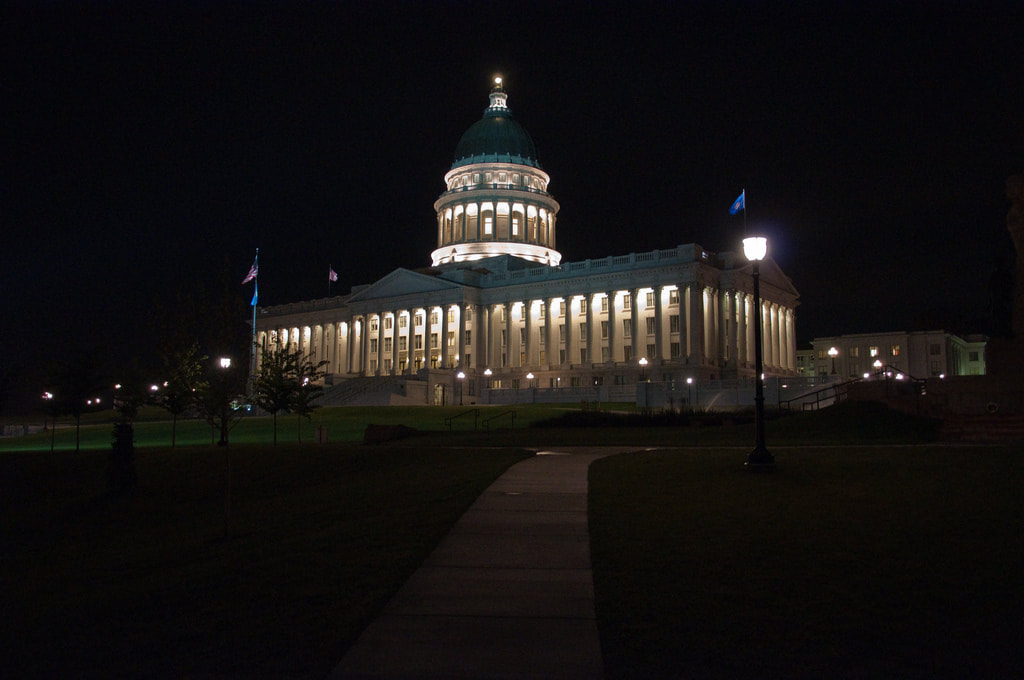| Utah’s political lopsidedness may make this week’s arguments before the U.S. Supreme Court over political boundaries seem like a moot point here. How lopsided are we? Let me count the ways. Only 13 of 75 state House seats and five of 29 Senate seats belong to Democrats here. By themselves, Democrats are powerless to stop any bill from becoming law. |
| | In real numbers, the latest figures from the lieutenant governor’s office show there are 716,234 registered Republicans in the state, compared with only 177,097 Democrats. Of course, another 601,097 Utah voters identify as independent. That number has grown by about 100,000 since 2015, possibly led by Republicans upset with Donald Trump. But it’s unclear how many of them might be persuaded to vote for a Democrat once in awhile. Face it, Utah is a Republican state. Most people here prefer it that way. Conventional wisdom says it’s impossible to draw districts in Utah that would elect more Democrats. All of which is true except for the last sentence. What’s more likely is that it would be impossible to redraw boundaries in ways that would elect more than a few more Democrats. The question is whether it would be in the state’s best interest to do even that much. Put another way, what is the value of a greater diversity of thought and opinion in the halls of state government? Do arguments against gerrymandering — a term that dates to 1812 when Massachusetts Gov. Elbridge Gerry drew a district in a form reminiscent of a salamander in order to preserve his party’s political power — become even more important in a state dominated by one party? Or, to put it in terms a business-friendly state can understand, is competition a good thing? The answer should be obvious. Whenever talk starts about fairer ways to redraw districts, I get bombarded by people telling me we might as well search for unicorns. There is no way to make an inherently political thing non-political. That certainly was one of the arguments heard at the Supreme Court on Tuesday, in a case involving Wisconsin and district boundaries that could pass as Rorschach tests. The newest justice, Neil Gorsuch, wondered what kind of formula the court possibly could devise to make things fair. Fellow conservative Chief Justice John Roberts wondered whether the court could get involved without hurting its reputation and meddling in places it doesn’t belong. Good questions, all. In the past, the court has outlawed district boundaries drawn to disenfranchise racial minorities. The current case could outlaw contrived partisan districts, which would completely change the way most states do business. It’s never good for a republic when unelected judges tell the politically charged legislative branch how to do things. That doesn’t mean, however, that the politically charged branch shouldn’t make some changes on its own. To be fairly represented, shouldn’t people who live under similar circumstances and in the same geographic area be allowed to choose their own representatives? In Utah, Salt Lake County gets divided into parts of each of the state’s four congressional districts, just to separate the Democrats. Would it be more representative to have that county mostly represented by one member of Congress? Are there other parts of the state where legislative districts could more fairly represent the needs of neighborhoods with similar people and interests? In Arizona, an independent commission draws the state’s boundaries. The Republican and Democratic parties each get to nominate 10 party members and five independents. These cannot be people who have held office or been political appointees of any kind in the last three years. The parties’ legislative leaders narrow the list to four partisan members each. Those four then choose an independent chairperson as the fifth member. I wish I could say that system was non-controversial. In 2011, the governor tried to remove the chairwoman when it was clear the new boundaries would benefit Democrats more than Republicans. The state Supreme Court eventually reinstated her. In Utah, by comparison, Utah Republicans redrew boundaries in 2011 mostly in secret. No, you can’t separate politics completely from political boundaries. But even in a lopsided state there are better ways to make sure people are fairly represented. |


 RSS Feed
RSS Feed

